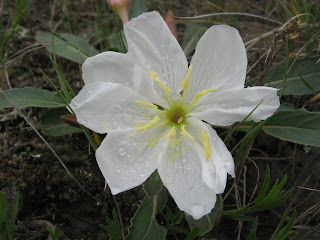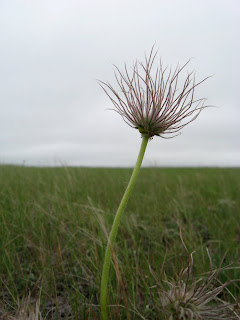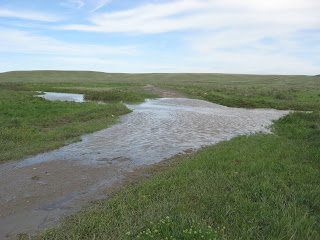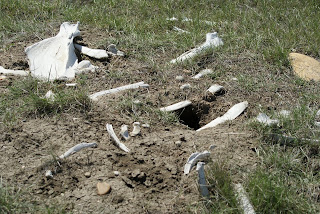



















Tomorrow is supposed to rain again, so not much hope of getting out. Even if the weather stays nice, it'll take a couple of hot sunny days to dry up the streams enough for us to take the vehicles anywhere.




I'm hoping to get outside and work tomorrow, as Thursday is supposed to rain again. I know it's sentimental and not very scientific of me, but I always worry a bit about the nests when the weather is bad. Luckily it serves to remind me again how tough nature really is. Even if a nest fails, female songbirds will begin building a new nest just a couple days after. Life always finds a way, even out here on the unforgiving prairie.






We also found a new friend while crossing a stream... Western painted turtles are pretty common out here.
We're definitely ahead of schedule for finding nests and dragging plots compared to last year. I suppose having twice the number of people on the nest crew doesn't hurt :)






I was also asked to define what a life bird (or lifer) is. It is a term used by birders to recognize a species they have never seen before. Typically the "rules" are that it has to be wild, alive, and unrestrained to be counted. Many birders keep life lists, to keep track of how many species they have seen. Many different types of lists can be kept, including North American, country, state/province, county, town, or even backyard lists. Year lists are common as well. Typically I only keep a life and North American list, though since coming to Canada I've also kept Manitoba and Saskatchewan lists. My life list currently stands at 441, while my Saskatchewan list is 108 (over 30 of which were lifers!).










Tomorrow we have to head to the West Block for some orientation training. Hopefully by Wednesday or Thursday the roads will be dry enough to get out and start looking for some nests!




Some birds are residents of the pond, like this Great Horned Owl. There's a pair that successfully raised two chicks last year, and will likely nest again this year.

Another resident is this Killdeer, made popular by their broken-wing display when their nest is approached.
And even better news: yesterday I found my first nest of the year! I ran into it randomly while walking to the pond. It was a Western Meadowlark nest. It's not one of my study species, and the nest wasn't anywhere near my study sites, so it isn't data I can use. But it's still exciting, because it means the birds have definitely started nesting, even despite the bad weather. This nest had 5 eggs in it and the female was flushed from it, so obviously she didn't abandon due to the snow. It makes me even more eager to get out and start working!
The sunset was beautiful, as it typically is out here.



As if to say "psyche!", I woke up to a blizzard this morning, which quickly turned into a wet, slushy drizzle. Not very fun. Driving to Mankota to direct our remaining crew members back to the house, I stopped to take photos of these Yellow-headed Blackbirds.
